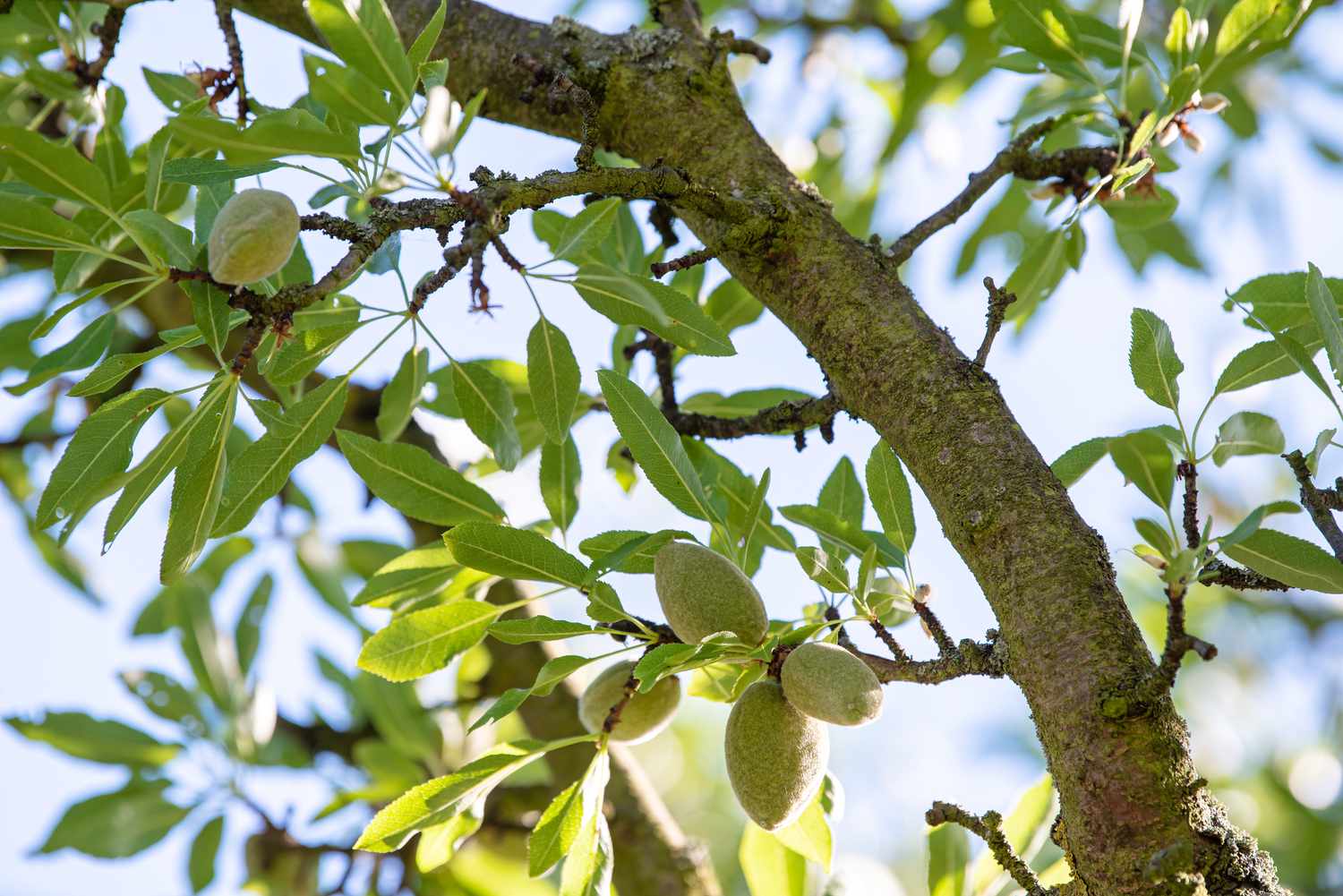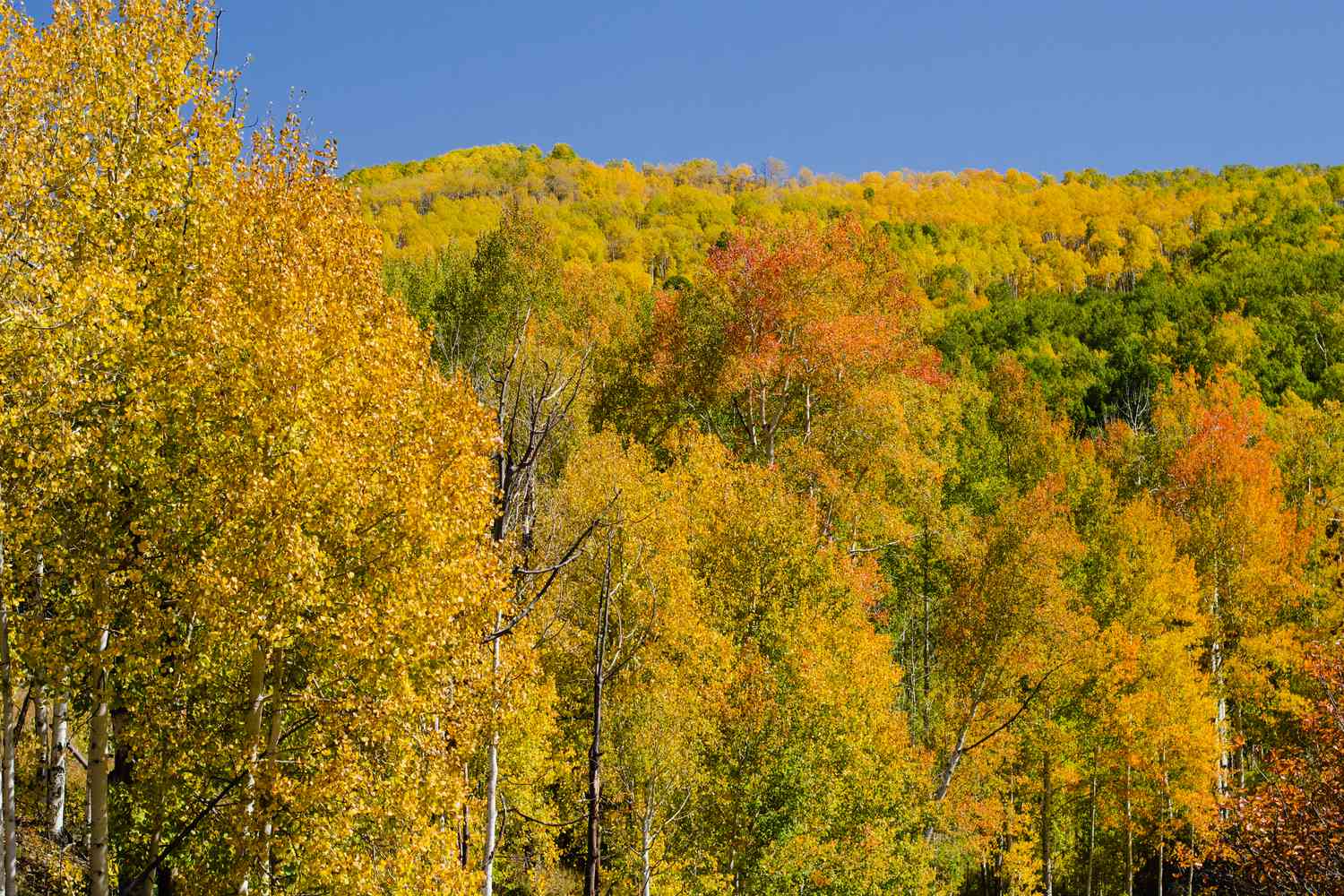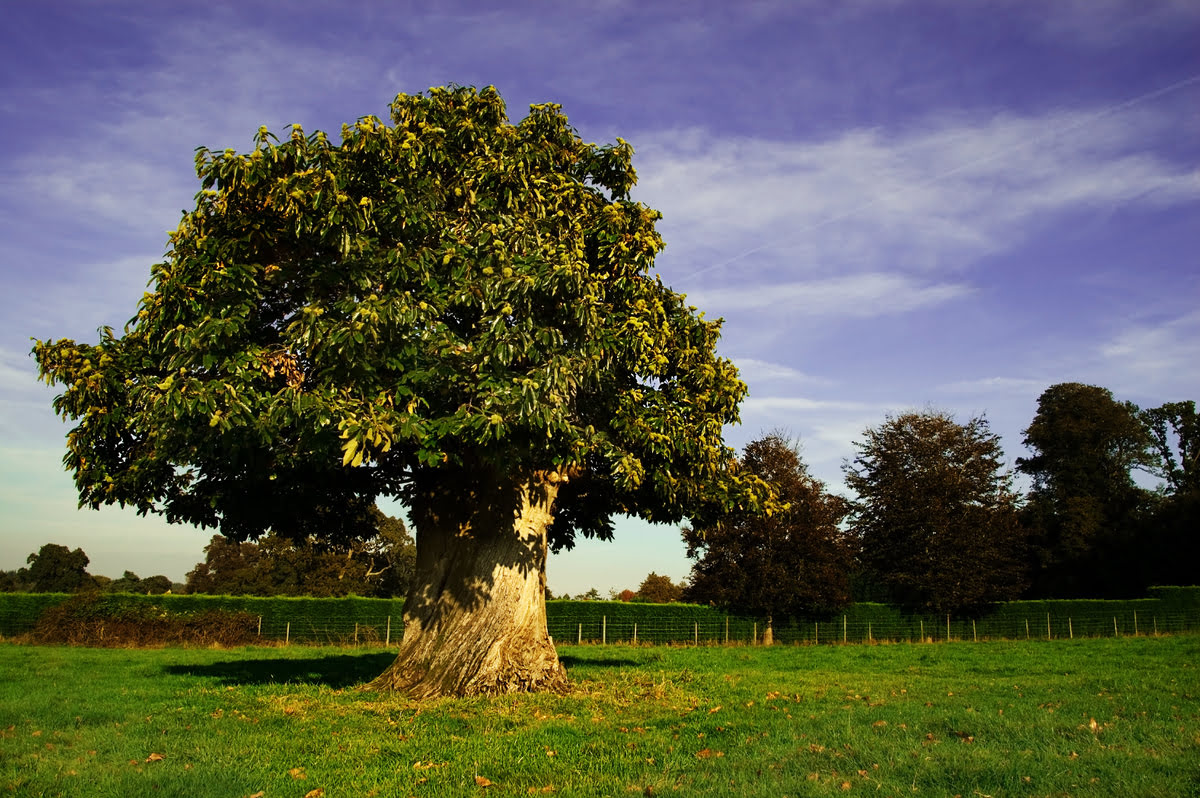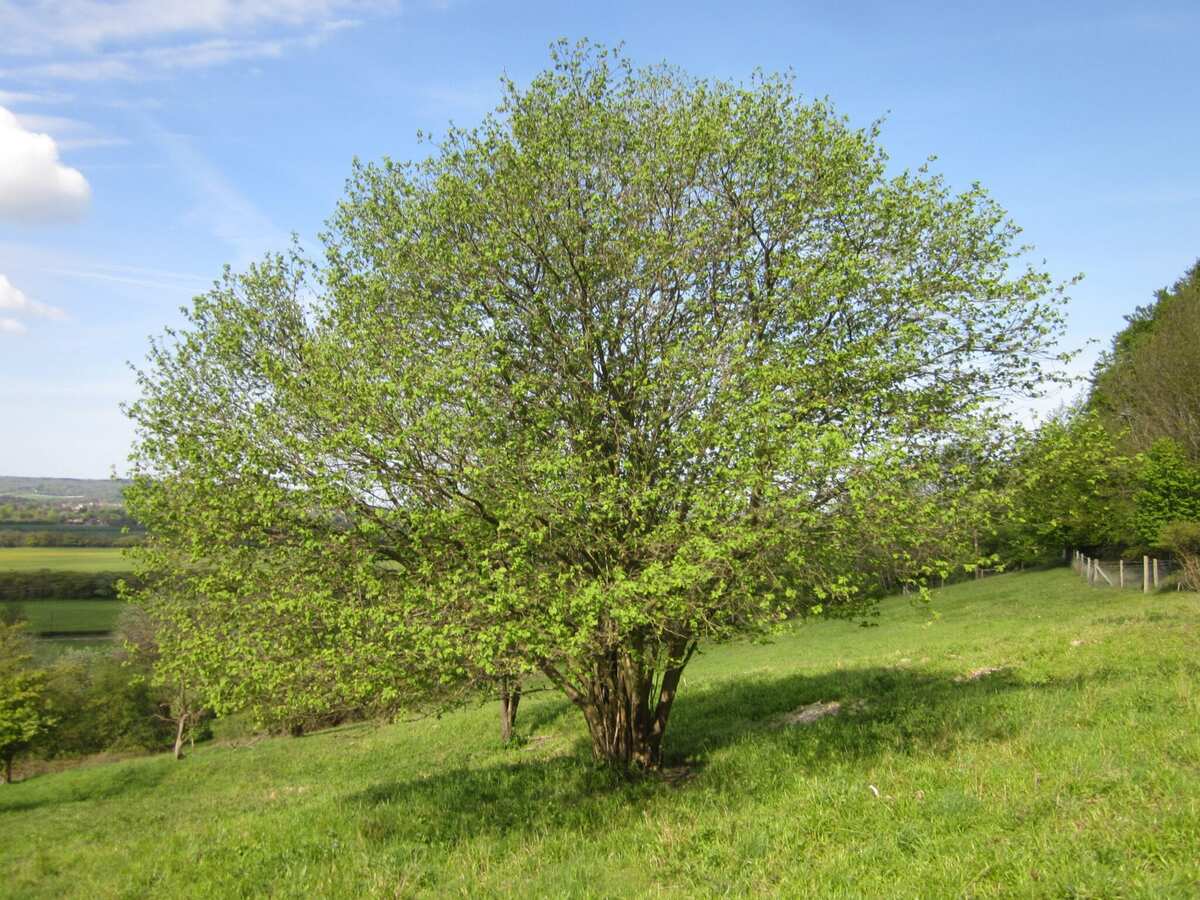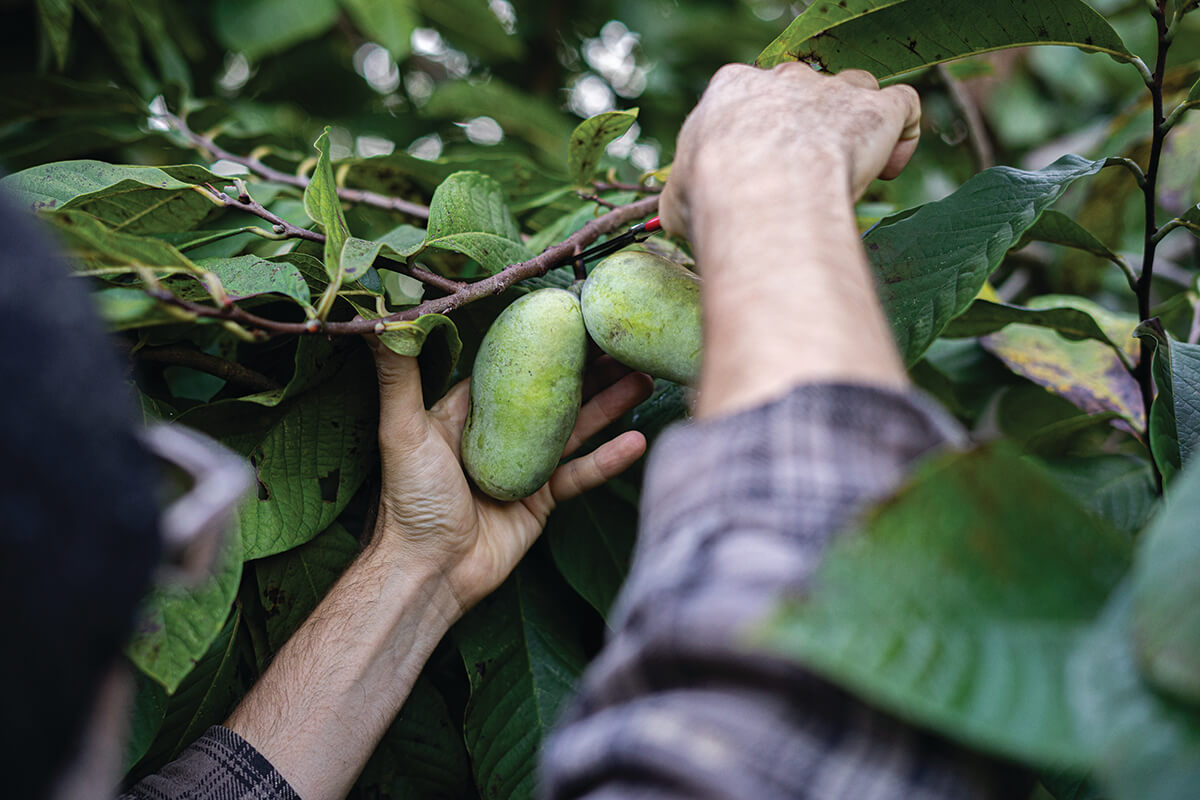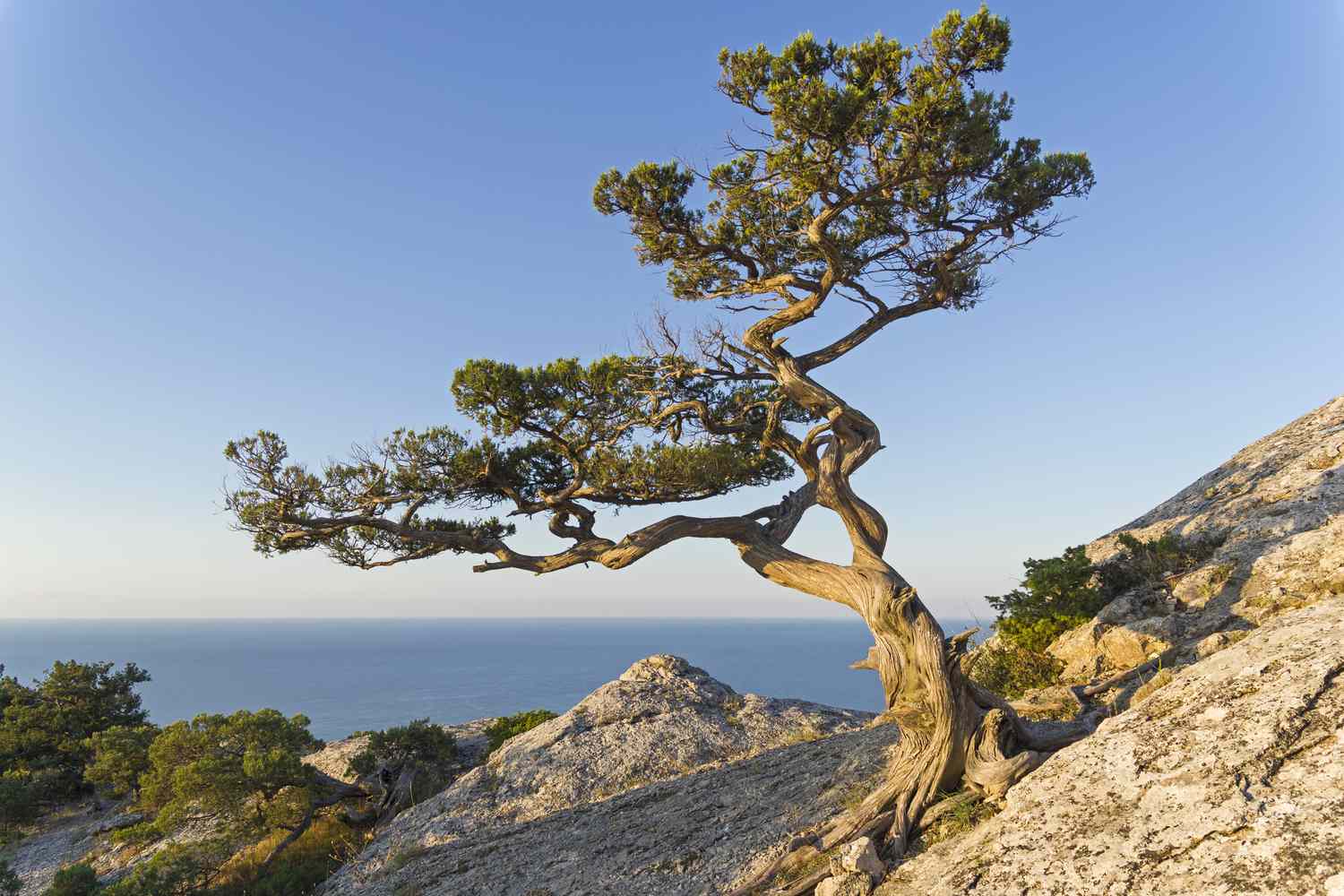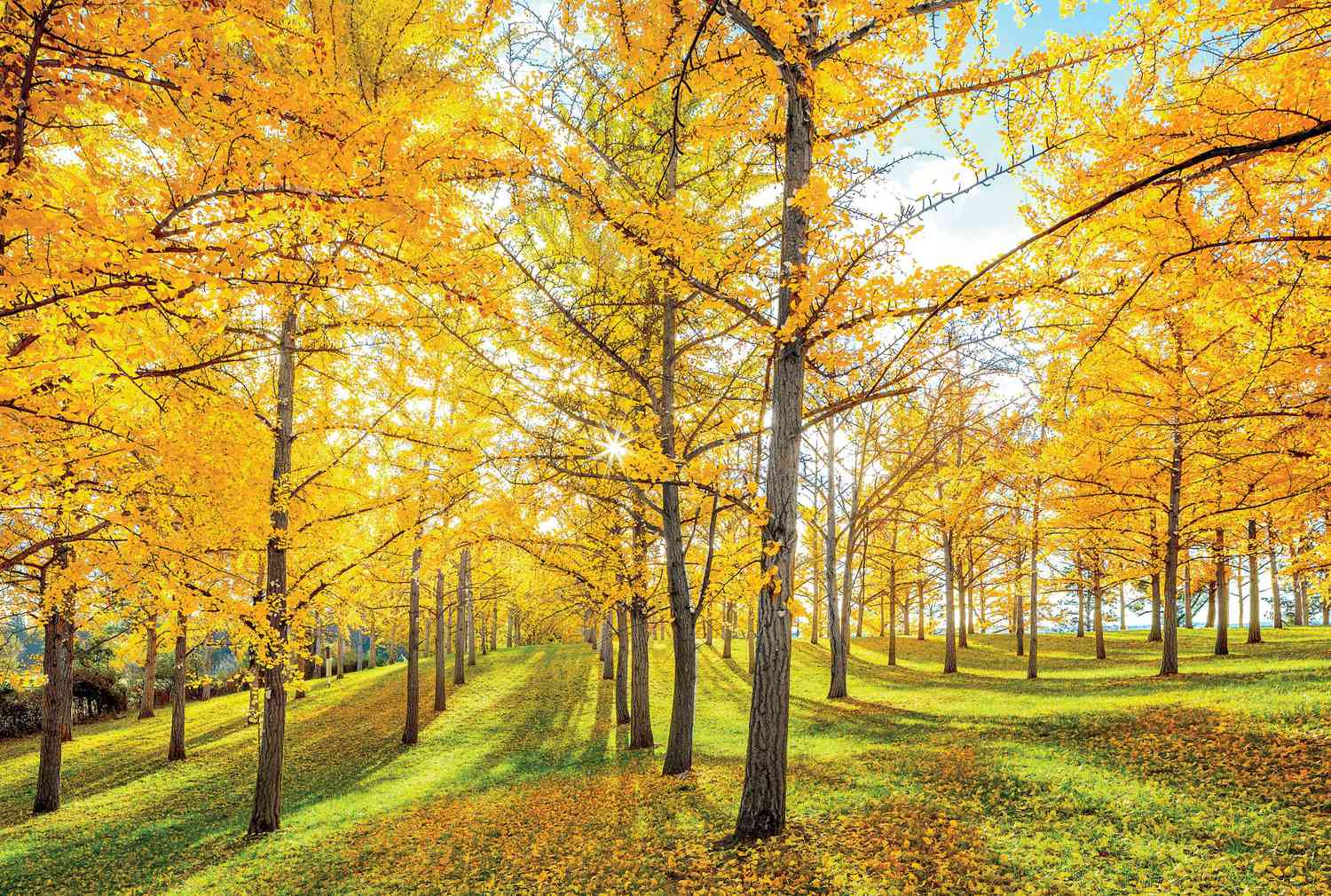Home>Gardening Basics>Understanding Soil>Where Do Cypress Trees Grow
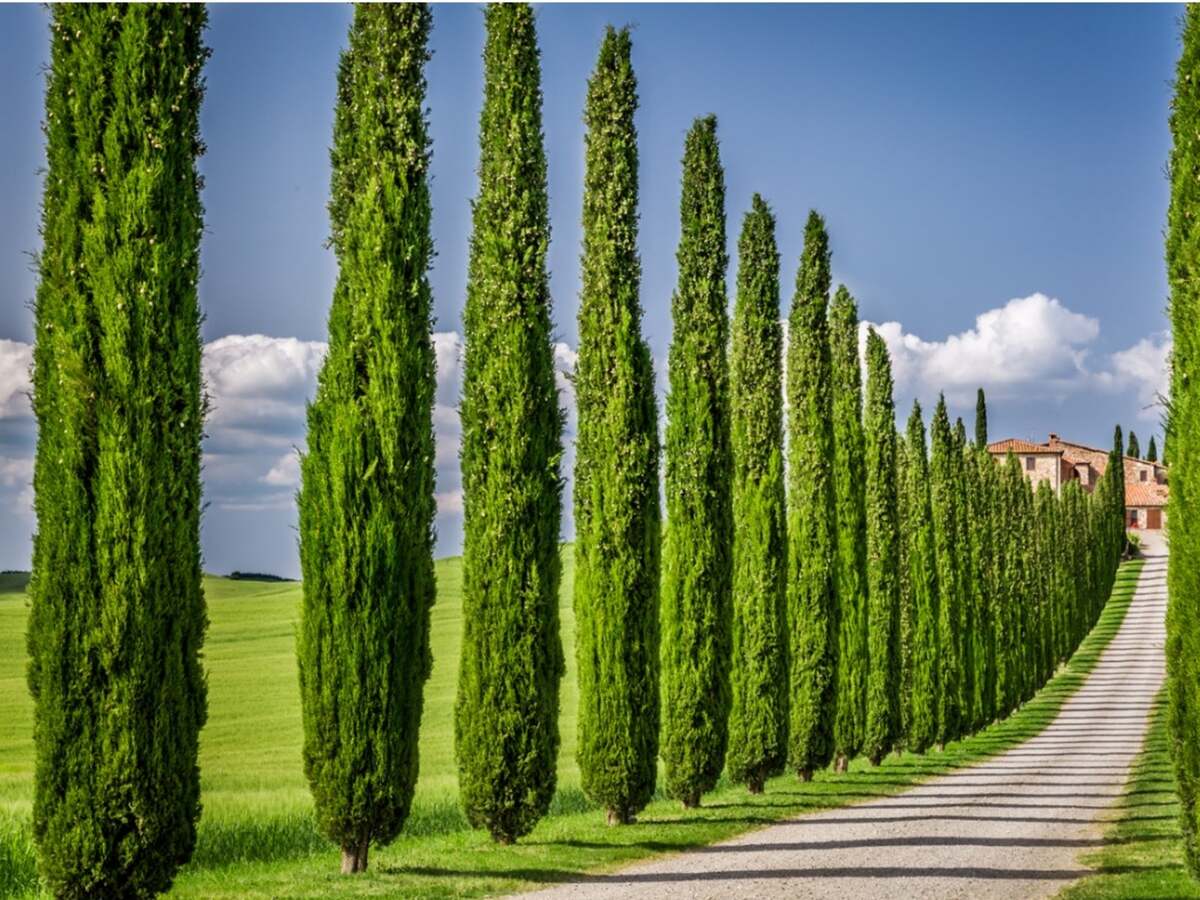

Understanding Soil
Where Do Cypress Trees Grow
Modified: February 8, 2024
Learn about the ideal soil conditions for cypress trees to thrive. Gain a deeper understanding of soil composition and its importance for cypress tree growth.
(Many of the links in this article redirect to a specific reviewed product. Your purchase of these products through affiliate links helps to generate commission for Chicagolandgardening.com, at no extra cost. Learn more)
Table of Contents
Introduction
Cypress trees are some of the most fascinating and majestic trees in the world. With their tall stature, evergreen foliage, and unique cone-shaped crowns, cypress trees bring beauty and elegance to any landscape they grace. But have you ever wondered where these magnificent trees grow and thrive?
Understanding the soil requirements and climate conditions necessary for cypress trees to flourish is essential for anyone looking to incorporate these trees into their landscaping plans, whether for aesthetic purposes, environmental benefits, or timber production. In this article, we will explore the geographic distribution of cypress trees and delve into the specific regions where they are commonly found.
Cypress trees have a rich history and have been prized for their various uses for centuries. They are known for their resilience, adaptability, and ability to thrive in a wide range of environments. From their roots to their towering branches, cypress trees possess unique characteristics that set them apart from other tree species.
Join us as we explore the diverse climates and geographical regions in which cypress trees grow, including North America, Europe, Asia, Africa, and Australia and Oceania. Discover the fascinating landscapes where these renowned trees call home, and gain a deeper appreciation for their ecological significance and cultural relevance.
So, whether you’re an avid gardener, a nature enthusiast, or simply curious about the world around you, let’s embark on this journey to uncover the captivating world of cypress trees and the enchanting places they inhabit.
Climate Requirements for Cypress Trees
Cypress trees have a remarkable ability to adapt to a wide range of climates, making them incredibly versatile and resilient. However, they do have specific preferences when it comes to temperature, rainfall, and humidity, which influence their optimal growth and survival.
Temperature is a crucial factor for cypress trees. They generally thrive in temperate to subtropical regions, preferring mild winters and warm summers. Most cypress species can tolerate temperatures ranging from -15°C (5°F) to 40°C (104°F), with some species being more adaptable to extreme temperatures than others. The optimal temperature range for cypress tree growth lies between 20°C (68°F) and 30°C (86°F), although variations occur depending on the specific species and their native habitats.
Another essential factor for cypress trees is rainfall. They typically flourish in areas with moderate to high annual precipitation. A minimum average rainfall of 750 millimeters (30 inches) per year is generally required for healthy growth. However, some cypress species, like the bald cypress (Taxodium distichum), are highly adaptable and can tolerate both wet and dry conditions, making them suitable for regions with varying rainfall patterns.
In terms of humidity, cypress trees generally prefer areas with moderate to high humidity levels. The presence of moist air helps sustain their foliage and promotes healthy growth. However, certain species, such as the Monterey cypress (Cupressus macrocarpa), can also thrive in coastal regions with lower humidity.
It’s important to note that while cypress trees have specific climate preferences, they have also proven to be remarkably adaptable and can tolerate some variations in temperature, rainfall, and humidity. This adaptability is one of the reasons why cypress trees have managed to establish themselves in diverse regions across the globe.
Understanding the climate requirements of cypress trees is crucial for anyone considering growing these majestic trees. By providing the appropriate conditions, you can ensure their optimal health and growth, enabling them to thrive and contribute to the beauty and ecological balance of your landscape.
Geographical Distribution of Cypress Trees
Cypress trees can be found in various parts of the world, each region offering unique environmental conditions that allow these trees to thrive. Let’s explore the different continents where cypress trees are prominently distributed.
North America: In North America, cypress trees are most commonly found in the southeastern United States, particularly in swampy areas and along riverbanks. The bald cypress, with its distinctive “knees” protruding from the water, is a well-known sight in this region. You can also find the Monterey cypress along the coast of California.
Europe: Cypress trees are native to the Mediterranean region, and they can be found in countries such as Italy, Greece, Spain, and Turkey. The Italian cypress, with its slender, columnar shape, is a familiar sight in the landscapes of this region.
Asia: The Asian continent is home to a variety of cypress tree species. Japan, in particular, is known for its beautiful Japanese cedar (Cryptomeria japonica) forests. China and Vietnam are also home to several cypress species, including the Chinese swamp cypress (Glyptostrobus pensilis) and the Vietnamese golden cypress (Xanthocyparis vietnamensis).
Africa: In Africa, cypress trees can be found in countries such as Morocco, Algeria, Tunisia, and South Africa. The Moroccan cypress (Cupressus atlantica) is a notable species found in the Atlas Mountains of Morocco.
Australia and Oceania: The Murray River cypress pine (Callitris glaucophylla) is an iconic Australian cypress tree species found in the arid regions of the country. New Caledonia and New Zealand are also home to unique cypress species, including the New Caledonia cypress (Callitris neocaledonica) and the New Zealand cypress (Stewartia monadelpha).
Overall, cypress trees have managed to establish themselves in various regions worldwide, adapting to the local environmental conditions. Their distribution across continents adds to their global significance and makes them a captivating sight for nature enthusiasts and travelers alike.
Cypress Trees in North America
North America is home to several species of cypress trees, which can be found in different parts of the continent. Let’s explore the cypress tree species and their distribution in this region.
Bald Cypress: The bald cypress (Taxodium distichum) is perhaps the most iconic cypress tree in North America. It is native to the southeastern United States and can be found in swampy areas, along riverbanks, and in floodplains. The bald cypress is known for its distinctive “knees,” which are woody projections that emerge from the water, believed to provide stability to the tree in aquatic environments. This majestic tree has become a symbol of the beauty and resilience of the southern wetlands.
Pond Cypress: Another cypress species found in the southeastern United States is the pond cypress (Taxodium ascendens). This tree closely resembles the bald cypress, but it typically grows in drier upland areas rather than wetlands. It is often found growing alongside the bald cypress, creating a picturesque combination of cypress trees in the landscape.
Montezuma Cypress: The Montezuma cypress (Taxodium mucronatum) is native to Mexico and can be found in some parts of southern Texas. This tree is known for its massive size, with some individuals reaching up to 150 feet in height. The Montezuma cypress is often planted for its ornamental value and can be seen in parks and gardens in southern regions of North America.
Monterey Cypress: The Monterey cypress (Cupressus macrocarpa) is a species that is primarily found along the coast of California. It has distinctive dark green foliage and a unique gnarled appearance, as it is often shaped and sculpted by coastal winds. This tree has become an iconic symbol of the Central Coast of California and can be seen in various natural reserves and parks in the region.
These cypress tree species in North America serve not only as aesthetic additions to the landscape but also provide important ecological benefits. They contribute to the preservation of wetland ecosystems, help control soil erosion, provide habitat for wildlife, and offer shade and shelter in their respective environments.
Whether you’re exploring the swampy wetlands of the Southeast or enjoying the scenic coastal areas of California, the presence of cypress trees adds beauty and a sense of tranquility to North America’s natural landscapes.
Cypress Trees in Europe
Europe is home to various species of cypress trees, with each species contributing to the continent’s diverse natural landscapes. Let’s explore some of the prominent cypress tree species found in Europe and the regions where they can be seen.
Italian Cypress: The Italian cypress (Cupressus sempervirens) is one of the most well-known cypress species in Europe. Native to the Mediterranean region, this tall and slender tree has been a part of European landscapes for centuries. It is often featured in formal gardens, parks, and alongside avenues, creating a captivating visual effect with its columnar shape.
Mediterranean Cypress: The Mediterranean cypress (Cupressus macrocarpa) is another species found in Europe, although it is more commonly associated with regions like California. It has been successfully introduced to areas with a Mediterranean climate, such as parts of Italy, Spain, and Greece. This tree closely resembles the Italian cypress but has larger cones and a slightly different branching pattern.
Lawson Cypress: The Lawson cypress (Chamaecyparis lawsoniana) is native to North America, but it has been widely planted throughout Europe for its ornamental value. This tree, with its feathery foliage and conical shape, can be found in parks, gardens, and landscapes across the continent.
Hinoki Cypress: The hinoki cypress (Chamaecyparis obtusa) is a species native to Japan but has been introduced to Europe for its aesthetic appeal. Its fine-textured foliage and elegant form make it a popular choice for gardens and landscaping in countries like the United Kingdom and Germany.
These cypress tree species contribute to the beauty and character of the European landscape, with their presence evoking a sense of timeless elegance. Whether lining the streets of historic Italian towns, embellishing Mediterranean gardens, or adding a touch of Asian-inspired serenity to European parks, cypress trees create a visual connection to nature and offer a sense of tranquility in their surroundings.
As the climate shifts and challenges arise due to factors like urbanization and climate change, the conservation and preservation of these cypress tree species in Europe become increasingly important. Their unique beauty and ecological significance are a testament to the rich natural heritage of the continent.
Cypress Trees in Asia
Asia is home to a remarkable diversity of cypress trees, with various species thriving in different parts of the continent. Let’s explore some of the prominent cypress tree species found in Asia and the regions where they can be seen.
Japanese Cedar: The Japanese cedar (Cryptomeria japonica) is a tall and majestic cypress tree native to Japan. Known as “sugi” in Japanese, it is considered one of the iconic tree species in the country. Japanese cedar forests can be found throughout Japan, with some ancient groves dating back centuries. These trees have significant cultural and economic importance, providing timber and serving as a symbol of longevity and strength.
Chinese Swamp Cypress: The Chinese swamp cypress (Glyptostrobus pensilis) is a unique species found in southern China and Vietnam. It thrives in swampy or waterlogged regions and has adapted to survive in these challenging environments. These trees are often seen growing in wetlands, along riverbanks, and in floodplain forests, contributing to the ecological balance of these areas.
Monterey Cyprus: Despite its name, the Monterey cypress (Cupressus macrocarpa) is not native to Asia but has been successfully introduced to certain regions in Asia, most notably coastal areas in China and South Korea. These trees can be found dotting the rugged coastlines and adding a touch of charm to the landscapes.
Himalayan Cypress: The Himalayan cypress (Cupressus torulosa) is a species found in the Himalayan region, including countries like India, Nepal, and Bhutan. These trees can thrive at higher altitudes, showcasing their adaptability to challenging mountainous terrain. The Himalayan cypress is celebrated for its religious and cultural significance and is often associated with sacred groves and spiritual practices.
These cypress tree species in Asia not only contribute to the beauty of the landscapes but also provide important ecological functions. They offer shade and shelter to wildlife, prevent soil erosion in mountainous regions, and play a role in maintaining water quality and regulating river flow.
As Asia continues to experience rapid urbanization and environmental changes, preserving these cypress tree species becomes crucial for maintaining biodiversity and ecological balance. They serve as a reminder of the rich natural heritage of the continent and the importance of sustainable practices to ensure their survival for future generations to enjoy.
Cypress Trees in Africa
Africa is home to several species of cypress trees, each contributing to the diverse and unique landscapes of the continent. Let’s explore some of the cypress tree species found in Africa and the regions where they are prominently distributed.
Moroccan Cypress: The Moroccan cypress (Cupressus atlantica) is a species native to Morocco and is found primarily in the Atlas Mountains. This evergreen conifer can withstand the arid conditions of the region and is known for its striking blue-green foliage. The Moroccan cypress has cultural and economic importance, with its wood used for various purposes, including furniture and building materials.
African Cypress: The African cypress (Widdringtonia spp.) is a genus of cypress trees indigenous to southern Africa. These trees, including species such as Widdringtonia nodiflora and Widdringtonia cedarbergensis, can be found in countries like South Africa and Namibia. They are known for their unique conical shape and aromatic wood, which has been used for traditional purposes such as making furniture, carvings, and incense.
Juniperus Procera: Although not a true cypress, the Juniperus procera, also known as the African juniper, is a tall coniferous tree native to East Africa. It can be found in countries like Ethiopia, Kenya, and Uganda. This tree is known for its twisted branches and distinctive blue-green foliage, providing a unique visual element to the landscapes of these regions.
These cypress tree species in Africa play an essential ecological role in their respective habitats. They provide shelter and food for wildlife, contribute to soil conservation and water regulation, and have cultural significance for local communities.
Preserving these cypress tree species in Africa is crucial, as they face threats due to deforestation, habitat degradation, and climate change. Efforts to protect these species and their habitats not only safeguard biodiversity but also safeguard the ecological services that these trees provide.
By recognizing the significance of these cypress tree species in Africa, we can better appreciate the beauty and importance of the natural landscapes found across the continent.
Cypress Trees in Australia and Oceania
Australia and Oceania are home to diverse ecosystems and unique plant species, including various types of cypress trees. Let’s explore some of the cypress tree species found in this region and the areas where they thrive.
Murray River Cypress Pine: The Murray River cypress pine (Callitris glaucophylla) is a prominent cypress tree species found in Australia. It is well-adapted to the arid regions of the country, particularly in the Murray-Darling Basin. These trees have a distinct blue-gray foliage and rugged bark, adding character to the Australian outback landscapes.
New Caledonia Cypress: The New Caledonia cypress (Callitris neocaledonica) is native to the island of New Caledonia in the southwestern Pacific Ocean. This species has a unique appearance, with dense foliage and a conical shape. It is often found in the lowland forests of New Caledonia and contributes to the biodiversity of this region.
New Zealand Cypress: The New Zealand cypress (Stewartia monadelpha), also known as the mountain cedar or Kaikawaka, is a coniferous tree found in New Zealand. It can be seen in various regions across the country, including the central North Island and the South Island. This species is known for its twisted and gnarled branches, making it a fascinating sight in the New Zealand landscapes.
These cypress tree species in Australia and Oceania not only add beauty to the landscapes but also have ecological significance. They provide habitat and food for native wildlife, help prevent erosion in fragile ecosystems, and contribute to the overall biodiversity of the region.
As land management practices and climate change continue to impact these environments, conserving these cypress tree species becomes vital. Protecting their habitats and ecosystems not only ensures the survival of these unique trees but also contributes to the preservation of the entire ecosystem and its inhabitants.
Exploring the cypress trees in Australia and Oceania offers an opportunity to appreciate the remarkable adaptability of these species and the beauty they bring to the landscapes of this diverse region.
Conclusion
Cypress trees are truly remarkable and iconic additions to landscapes all around the world. From the swamps of North America to the Mediterranean region of Europe, the diverse climates and geographical distributions of cypress trees highlight their adaptability and resilience.
Understanding the soil requirements and climate conditions necessary for cypress trees to flourish is essential for creating thriving ecosystems and incorporating these majestic trees into our landscapes. Whether you are a gardener, a nature enthusiast, or a landscape designer, knowing where cypress trees grow can help you make informed decisions about incorporating them into your environment.
From the bald cypress and pond cypress in North America to the Italian cypress and Mediterranean cypress in Europe, these trees bring beauty and elegance to their respective regions. Meanwhile, the Japanese cedar and Chinese swamp cypress exemplify the range and diversity of cypress trees in Asia. Africa boasts unique species such as the Moroccan cypress and African cypress, adding their own flair to the continent’s landscapes. Lastly, the Murray River cypress pine, New Caledonia cypress, and New Zealand cypress showcase the adaptability of cypress trees in Australia and Oceania.
Preserving and protecting these cypress tree species and their habitats is crucial for maintaining biodiversity, ecological balance, and the cultural heritage associated with these majestic trees. By recognizing their significance and understanding their distribution, we can better appreciate and steward these natural treasures for generations to come.
So, whether you find yourself in the wetlands of North America, the coastal regions of Europe, the mountainous landscapes of Asia, the diverse ecosystems of Africa, or the picturesque landscapes of Australia and Oceania, keep an eye out for the captivating beauty of cypress trees. Their presence adds a touch of elegance, environmental benefits, and a connection to the natural world that is truly awe-inspiring.
